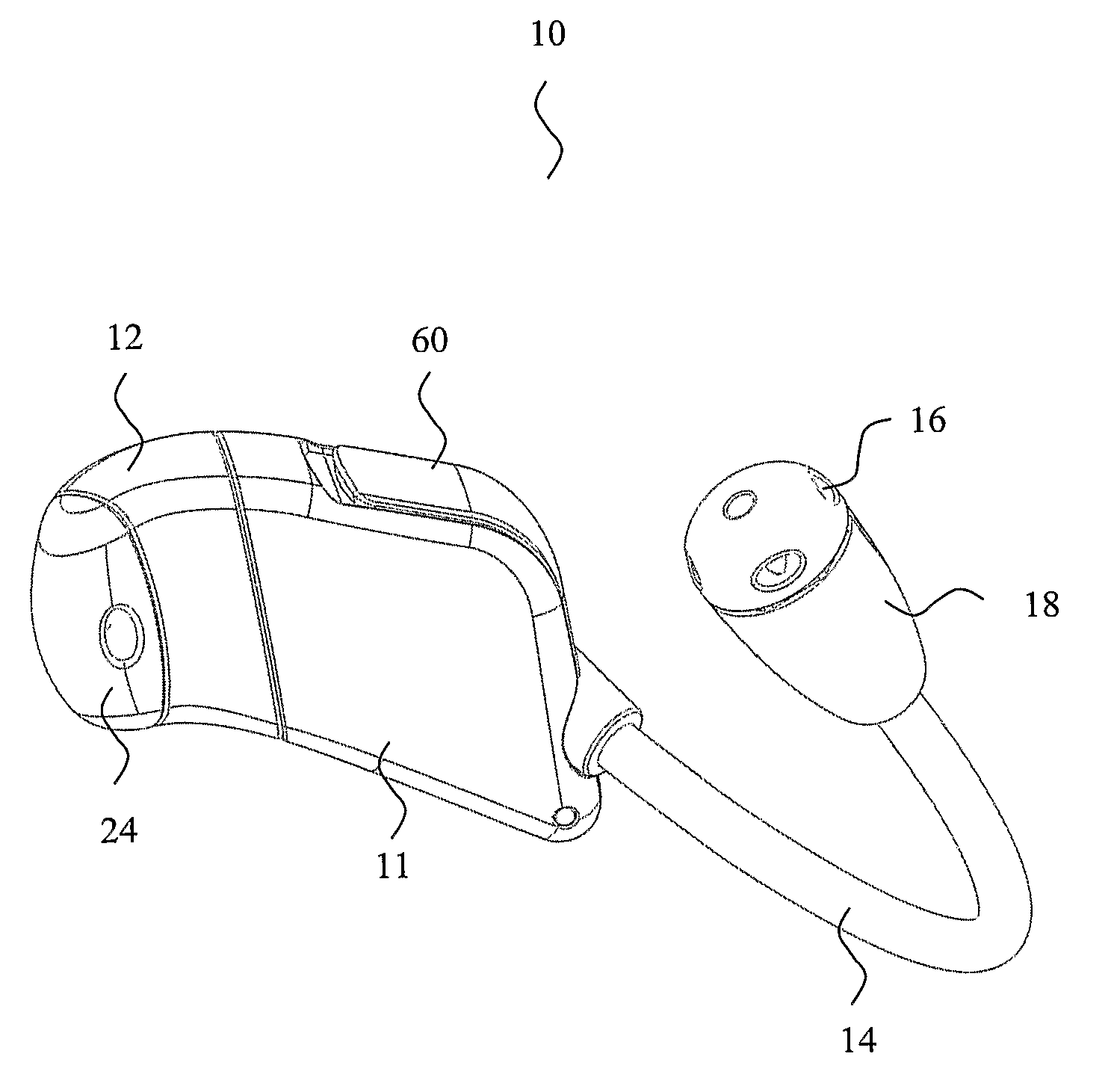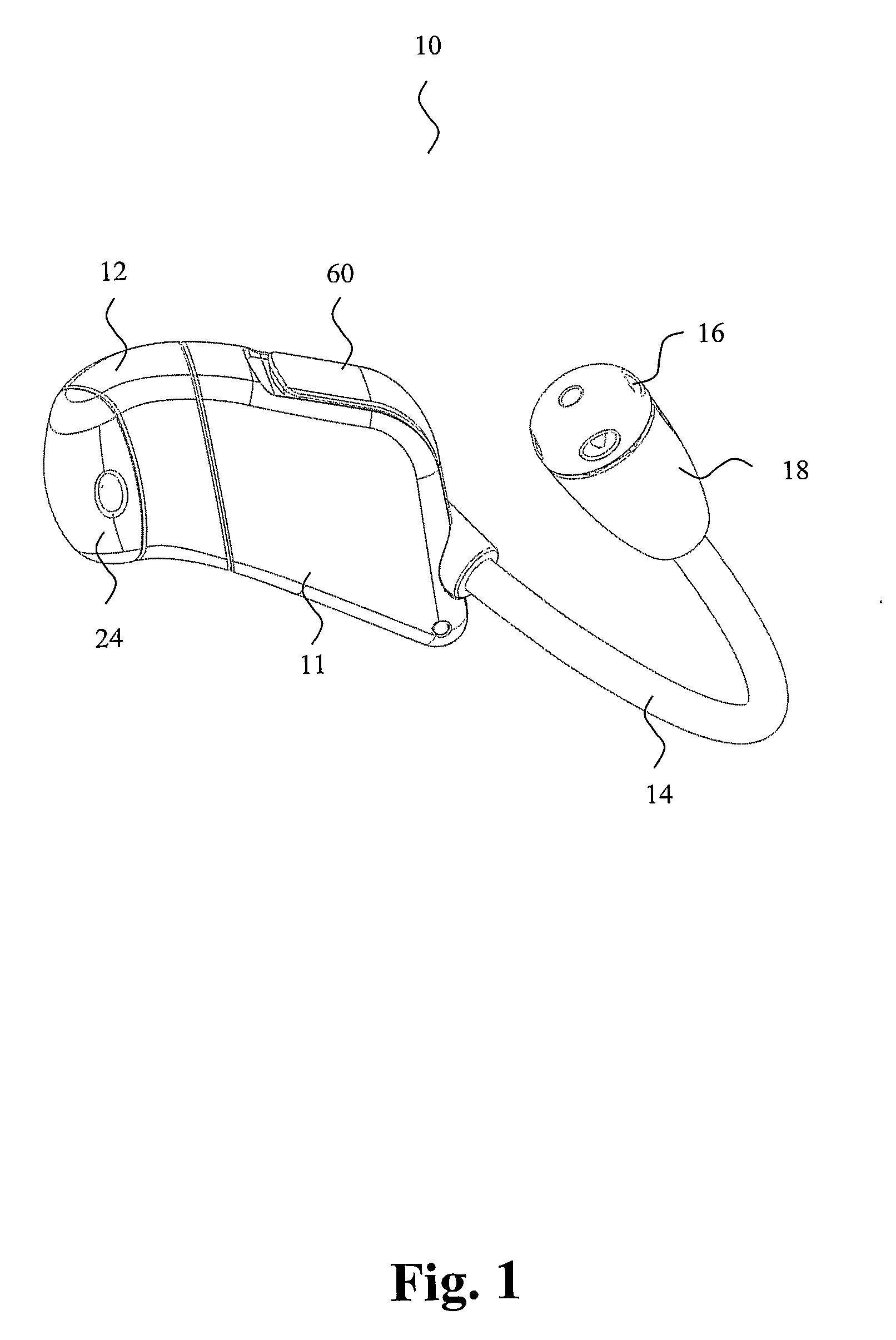The custom made earpiece adds to the cost of the
hearing aid and the time needed to fit the hearing aid.
Since the walls of the ear canal are moving when the jaws move for instance when chewing, the placement of such
solid hearing aids in the ear canal can be associated with discomfort for the user.
Such devices are complicated to manufacture and will only offer limited venting.
Feedback limits the
maximum gain available to the user of the hearing aid.
In both examples, sound may “leak” from the
receiver to the
microphone and thereby cause feedback.
Such transmission may be airborne or caused by mechanical vibrations in the hearing instrument housing or some of the components within the hearing instrument.
This also makes the hearing aid less robust against bumps or impacts against the surroundings that may occur during use of the hearing aid, since a slight displacement of the
receiver may cause sufficient
internal feedback to significantly reduce the
maximum gain made available to the user without howling or whistling of the hearing instrument.
However, when the ear canal is blocked these bone-conducted sounds cannot escape from the ear canal.
The result is a build-up of high
sound pressure levels in the residual ear canal volume.
Other
occlusion related problems include too much amplification at low frequencies for hearing aid users with good
low frequency hearing, reduced speech intelligibility, poorer localization, physical discomfort and
increased risk of external ear
irritation and infection.
This large contact area of conventional CIC or ITE hearing aids leads to several inconveniences for the user.
For example,
humidity cannot escape to the surroundings in a normal way, since the
humidity is trapped by the tightly fitted housing.
The trapped
humidity is inconvenient in it self, but typically also leads to increased temperatures and increased formation of
bacteria on the
skin surface of the ear canal, which again may lead to infections that have to be treated by a doctor.
Feedback is a well-known problem in
hearing instruments and several systems for suppression and cancellation of feedback exist within the art.
This problem, which is also known as acoustical feedback, occurs e.g. when a hearing aid earpiece part does not completely fit the users ear, or in the case of an earpiece part comprising a vent.
In both examples, sound may “leak” from the receiver to the
microphone and thereby cause feedback.
The problem of external feedback limits the maximum
gain available in a hearing aid.
Tinnitus can be continuous or intermittent, and in either case can be very disturbing, and can significantly decrease the
quality of life for one who has such an affliction.
Tinnitus is also a side-effect of some medications, and may also result from an abnormal level of
anxiety and depression.
However, it must not be assumed that this condition is normal—cohort studies have demonstrated that damage to hearing from unnatural levels of
noise exposure is very widespread.
Tinnitus cannot be surgically corrected and since, to date, there are no approved effective
drug treatments, so-called
tinnitus maskers have become known.
The artificial sounds produced by the maskers are often narrow-band
noise.
Although
present day tinnitus maskers to a certain extent may provide immediate relief of tinnitus, the masking sound produced by them may adversely affect the understanding of speech, partly because S / N (Speech /
Noise) ratio would be lower due to the addition of noise, and partly because persons suffering from tinnitus often also suffer from a reduced ability to understand speech in noise as compared to people with normal hearing.
For many people, the known maskers will not provide any long term relief of tinnitus.
In one embodiment, the tinnitus relieving device does not compensate for a
hearing loss.
This creates the destructive interference that reduces the amplitude of the perceived noise.
 Login to View More
Login to View More  Login to View More
Login to View More 


